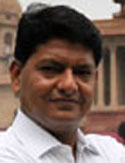
By Shishir Gupta
Sep 27, 2015
Security forces during a terrorist attack on a convoy of Border Security Force (BSF) on the Jammu-Srinagar National Highway in Udhampur district of Jammu and Kashmir. (PTI?File Photo)
During a meeting in New Delhi this month, the United Arab Emirates’ minister for foreign affairs, Abdullah bin Zayed Al Nahyan, surprised the Indian side when he linked the birth of global terrorism to three cataclysmic events in 1979: The erstwhile Soviet Union’s invasion of Afghanistan; the overthrow of Shah of Iran Reza Shah Pahlavi by cleric Ayatollah Ruhollah Khomeini; and the siege of the Holy Mecca shrine by ultra-orthodox Islamists known as Juhayman’s Ikhwan led by Juhayman al-Otaybi.
The rise of Shia Iran led to Saudi Arabia taking over the leadership mantle of Sunni Islam and the post-siege purges by Riyadh pushed Islamists into armed confrontation with the erstwhile Soviet Union in Afghanistan with the backing of the United States and its proxy, Pakistan. The siege of Mecca assumes significance in the context of the Indian subcontinent. In his recent book, Call for Transnational Jihad, the US-based Pakistani senior journalist Arif Jamal has correctly linked the leader of the siege, Juhayman al-Otaybi, and his fellow practitioners of Salafism to the banned Lashkar-e-Taiba (LeT).
According to Jamal, some of the Juhayman’s Ikhwan — Syed Allama Badiuddin Shah Rashdi, Hamid Mohammed Bahaziq, Mahmood Bahaziq, Hassan As-Sareehi, Ahmad Saad al-Ghamdi and their Pakistani followers — established the Markaz-ud-Dawa-wal-Irshad (MDI) in 1987.
The MDI was renamed the Jamaat-ud-Dawa (JuD) in 2001; the LeT is the armed wing of the JuD. Clearly identifying the LeT as a global jihad group from the days when its operational commander and 26/11 Mumbai attack main accused Zaki-ur Rehman Lakhvi fought the Red Army in Afghanistan, Jamal writes that the JuD and later al-Qaeda are the remnants of the Juhayman ideology.
The author then goes on to add that the JuD, led by Hafiz Saeed, a designated terrorist, has ensured that the LeT focuses on anti-Indian operations, while his brother-in-law Abdul Rehman Makki, who heads the ‘department of foreign affairs’ in the outfit, aims to bring the rest of the world under Islam through jihad.
The terror attacks in November 2008 in Mumbai and the recent ones in Gurdaspur in Punjab and Udhampur in Jammu and Kashmir prove that the LeT has the support of the Pakistan army when it comes to planning, training and logistics. This support ensures that the relationship between Islamabad and New Delhi is permanently on the boil. The Salafi terrorist group, according to Jamal, has had serious differences with groups like Harkat-ul-Ansar owing to its ideological affiliation to the Deoband school of thought since 1979.
This rivalry between the two continues with the LeT acting as a bulwark in Pakistani Punjab against the Deobandi Tehrik-i-Taliban Pakistan (TTP), Sipah-e-Sahaba Pakistan and Jaish-e-Mohammed (JeM) which are targeting the rule and rulers of Islamabad.
Saeed’s men have a presence in Kunar, Nuristan and Nangarhar provinces of Afghanistan and they have targeted both Indian and Nato assets in that country together with the Haqqani network under the guidance of Pakistan’s Inter-Services Intelligence (ISI).
The terror group has a global footprint — the US, Europe, West Asia and Indian Ocean littoral states — far beyond the Kashmir valley.
While terrorism will be one of the main topics of discussion between Prime Minister Narendra Modi and US President Barack Obama today, it is high time that both countries defanged the LeT and its sponsors if they want to restore normalcy between India and Pakistan and minimise the threats of accidental flare-up along the border.
There is also an urgent need to revive the national security adviser (NSA)-level talks on terrorism as those opposed to normal relations between the two neighbours are using terrorists to escalate the war of words between the two.
From the first recorded terror attack outside Kashmir in Himachal Pradesh in 1998, the LeT is now actively involved in targeting Indian interests in Afghanistan under the direction of Muridke-based Abdullah Mujahid and Kunar-based Khatlib Shafiq.
The first attack on the Indian embassy in Kabul on July 7, 2008, was traced by the US intelligence to the ISI with Haqqani network as the cat’s paw. The February 26, 2010, attack on guesthouses in Kabul, which left nine Indians dead, was carried out by the LeT, according to the Afghan intelligence sleuths. The same group was responsible for the suicide attack on the Indian consulate in Jalalabad on August 3, 2013, and then again in May 23, 2014, attack on Indian consulate in Herat.
The last attack happened days before Modi was sworn in as India’s prime minister on May 26, 2014. While Saeed has now become a TV celebrity of sorts in Pakistan with his standard anti-Indian vitriol, it does not take away from the fact that the emir of the LeT still has a $10-million bounty on his head with another $2 million on his brother-in-law Makki for heading one of the most lethal terror groups in the world.
The bounty on Saeed and Makki was declared by US State official Wendy Sherman in April 2012. When Pakistan Prime Minister Nawaz Sharif pays a bilateral visit to Washington on October 22, Obama should question him on the rise and rise of the LeT and impress upon him on the threat the group poses to India-Pakistan relations and the world.
America has a stake in the war against the LeT as terror modules of the group were unearthed in the US in 2003 and six of its nationals were killed during the 26/11 Mumbai attacks. With India in no mood to relent on either Kashmir or the Hurriyat, the presence of non-State players could strengthen the hands of those favouring unexpected retaliation in the case of another LeT attack.
Source: hindustantimes.com/analysis/weed-out-let-and-its-sponsors-to-normalise-indo-pak-ties/story-N6KFLGW88PDjyDzUoDIPIK.html




 Moderate Islamist here
Moderate Islamist here


0 comments:
Post a Comment